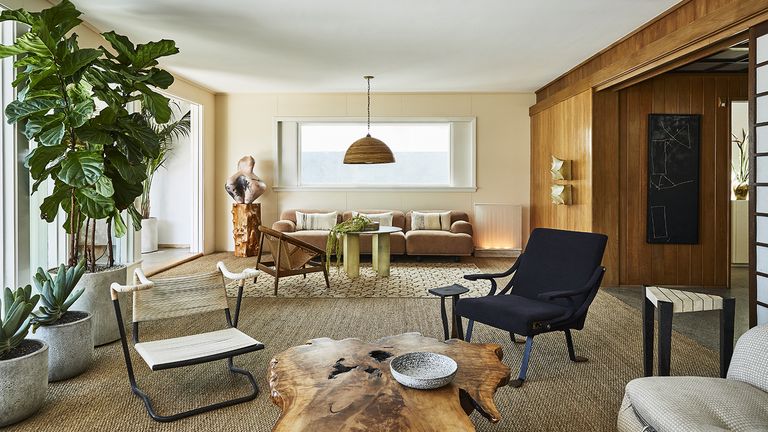Transforming your living space into a haven of warmth and style involves more than just choosing the right furniture and decor. The key lies in harnessing the power of lighting to accentuate design elements and create an inviting ambiance. In this comprehensive guide, we explore the world of accent lighting, lighting controls, and strategic lamp placement, offering insights that will elevate your living room to a new level of sophistication. Discover the magic of picture lights, cove lighting, and neon accents, coupled with the convenience of smart lighting controls and the artful positioning of floor, wall, and table lamps. Get ready to embark on a journey of illumination mastery that will redefine the way you experience your living space.

Accent Lighting
While ambient and task lighting fill in the overall space, accent fixtures spotlight special design elements and features throughout the living room. This mimics natural sunlight highlighting beauty. Many homeowners now include accent lighting as a permanent installation.
Here are popular accent lighting options:
-
Picture lights – Under-the-glass fixtures or strip lights draw eyes upward to wall art.
-
Cove lighting – Strip lights installed inside cabinets, shelving, soffits or crown molding, washing those features in soft light.
-
Niche lights – Small recessed cans, lights or sconces uplight nooks and built-ins.
-
Pendant lights – Miniature chandeliers hung low over islands, coffee tables or above built-in banquettes.
-
Spotlights – Uplighters or straight spotlights draw focus to architectural details, plants, statuary or specific furniture pieces.
-
Neon – Color-changing flexible LED strips, cursive lettering or industrial fixtures add fun flair.
-
LED strip lighting – Hidden behind, inside or under soffits, banisters, shelves, hoods and credenzas, these provide accents from the unseen.
-
Like task lights, place accent fixtures where elements demand highlighting while hiding the actual fittings for a clean look. Uplighters behind furniture or behind strip lighting inside shelves accentuate beauty subtly. Consider accent needs and planned features before installing fixtures permanently during renovations.
Lighting Controls
Besides fixture selection, choosing the proper lighting controls allows setting the perfect ambiance conveniently all over the living room based on the activity or time of day. Some options to consider.
-
Switches – Basic on/off switches work but dimmers adjustable in the middle let you tune brightness. Make sure the switches complement the room's style.
-
Pull chains – Retro treatment hangs bare bulbs from the ceiling beside a chain to tug for on/off transitions. Adds character.
-
Remotes – Wireless clickers change multiple fixtures at once from a seat instead of getting up to each switch. Battery-powered for convenience.
-
Smart lighting – LED bulbs connect via an app for preset scenes, timers, voice control through smart home devices like Alexa or Hue Bridge compatibility. Endless customizable options improve with every software update. Great for accent lights too.
-
Motion sensors – Automatic switches detect movement to turn lights on, making entryways or bathrooms hands-free. Some strobe for attention. Perfect for hard to reach spots or busy households.
-
Photocells – Automatic switches detect changing natural light levels to activate fixtures at dusk. Low ambient light during evening transitions maintains comfortable brightness in passive lighting zones. Less wiring than full home automation.
-
Group lights in zones based on their purpose and install compatible controls together. Traditional switches suit ambient fixtures with smart bulbs ideal for accent control via app. Wireless remotes let guests transition larger areas independently without smart home knowledge.
For example, control ambient ceiling lights with a switch while accent cove lighting responds to a dimmable remote. Group outdoor path lights under a photocell while decorative sconces link to motion sensors. Apply the right tool to each fixture category based on your living room style and needs.
Floor, Wall and Table Lamp Placement
Once fixture types and controls are chosen for your living room scheme, the next step involves precisely positioning table, floor and clip-on/swing-arm lamps where they are most useful. Proper planning yields pleasing light angles and beams where needed without clutter or blinding glare.
Use the below as guides for these flexible task lighting sources:
-
Place floor lamps in corners or beside furniture for balanced, ambient fill light without direct shine into eyes. 36-40 inches tall fits below ceiling beams. Consider illuminated path obstructions. Mount wall versions high in corners.
-
Table lamps flank seating setups like sofas, loveseats and reading chairs within easy reach. Rest on surfaces 30-36 inches high for ergonomic positioning without neck strain sitting. Arm types aim light precisely.
-
Clip-on or swing-arm lamps let you hang fixtures wherever needed temporarily such as above kitchen islands or coffee tables in living rooms without permanent wiring. Mount to solid surfaces safely away from tiny curious fingers.
-
Avoid direct placement opposite LCD TVs or monitors to prevent glare washing out the pixelated screens. Reflected light enhances visibility better than straight beams.
-
Pair floor and table lamps with dimmer switches for easy transitions based on activities without getting up to manually toggle each fixture.
-
Position sources at least 18 inches away from furniture edges to avoid shadows falling behind since light naturally spills beyond the point of origin.
-
Mount wall sconces about 72 inches high for balanced illumination along the eye level. Angle fixtures down and away from seating for comfortable angles.
-
Balance lamps evenly throughout the room based on your floor plan and furniture layout for consistent coverage. Too few lights leave dark areas while too many overwhelm the desired calm atmosphere. Experiment then settle on a functional arrangement with a designer's eye.
